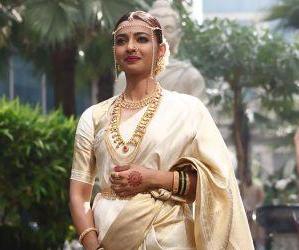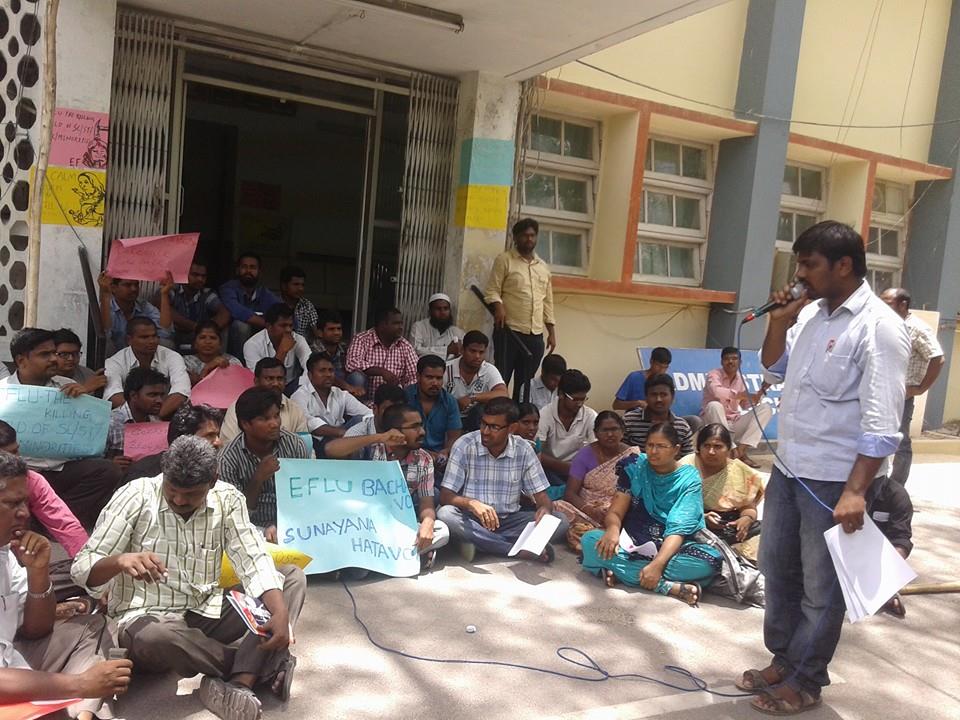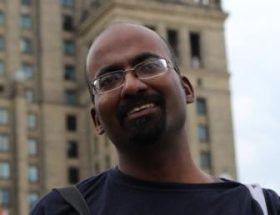Snehashish Das
Ambedkarite Questions to the Neeraj Ghaywan directed episode ‘The Heart Skipped A Beat’ in Made in Heaven
Although there are indeed the portraits of Buddha and Babasaheb portrayed in the Neeraj Ghaywan-directed episode ‘The Heart Skipped a Beat’ in the 2nd season of Made in Heaven, we must examine what is really Ambedkarite about the episode.
Let’s first ask the question: What is the series at large about, and how would there be a possibility of anti-caste assertion in the series? Here, I would reiterate, as I have said before, that all such progressive cinematic adventures by the so-called progressive filmmakers are to reinstate the age-long propaganda of ‘upper-caste’ victimhood. The ‘upper-caste’/savarna victimhood is not new in Indian society, which should be traced since Periyar’s movement or from the anti-Mandal agitation to the EWS implementation. But it goes back to a time between history and myth, which we know of but can’t answer exactly when – to the time when mythical stories with a sense of real were being written – when Brahmins were portrayed as victim figures as ascetic beggars or incapable of giving birth to a child. All that the so-called progressive filmmakers of today’s time are doing is just reinstating that victimhood narrative of the ‘upper-castes’. Most of the episodes of the series are about a range of issues, including colourism, misogyny, patriarchy, queerphobia, transphobia, ageism, disabilities, nationalism, ethnocentrism, cultural differences etc. Still, somehow, they are just ‘upper-caste’ issues in the lens of the series makers. All the victims of the above-mentioned societal problems are majorly ‘upper-caste’ persons in the series. The majority of India, at least 85% to 90% of the population, are Bahujans. So, how is it possible that all they think of is to have ‘upper-caste’ characters portraying societal issues that might have been common among communities across castes, religions, ethnicities, etc.?
There are possible answers. One, the series is named Made in Heaven. What is that Heaven that the marginalized communities in this country are entitled to? Most of our partnerships are made on Earth itself. It’s only the ‘upper-castes’ and their fantasy land of heaven/swarga where life and relationships are built. Maybe the creators of the series had taken serious note of it while designing the episodes, or maybe they just forgot about the Bahujans for a long time in the series. They knew that Buddhist weddings cannot be made in Heaven because Buddha and Buddhists don’t believe in the concept of Heaven in the first place (Ambedkar, 2013, p. 283, 357). They knew that the image of Buddha and the banner of Heaven don’t go well, philosophically and visually. For a long time in the series, they tried to keep the weddings strictly to the ‘upper-castes’ and thereby maintained their ideological integrity.
Second, the marriages have to be lavish since the series is mainly about the wedding company of the Khannas and the Mehras. The lavishness of marriage is always conditioned by how special marriage is in one’s life, like birth and death. Such uniqueness of marriage, unlike other general events of life, has to be accompanied by the sacredness attached to it, and the sacredness is inevitably related to priesthood. Thus, lavish weddings, marriage as a sacrament and priesthood are weaved interrelatedly, which is very common to caste-Hindus in India. So, to present a story centred around the wedding company of the Khannas and the Mehras, the creators had strictly limited the stories to the ‘upper-caste-Hindus’. The creators were doing good until the fifth episode. Even Neeraj Ghaywan did well in the 3rd episode, directing the story of property conflict over a marriage between Rainas and Malhotras and subsequent love between them in oldage amidst the pre-wedding ceremonies of their children, which makes them victims of social taboos. Ghaywan did justice to the concept of the series working upon ‘upper-caste’ victimhood narratives in that episode – which was old but still a good fit. But they had to have one episode on caste because how would they fit a Dalit character into the show, because all other issues portrayed in the series aren’t faced by Dalits apparently, except casteism. Without having a Dalit character, how would they sell this series to a new audience and create a high TRP?
To fit a Dalit character, they staged a Buddhist wedding. But what is a Buddhist wedding? Can it be a uniquely special event in one’s life, like of caste Hindus, as shown in the episode? Is it sacramental? If not, then what is the rationale for it being extravagant? I also wish to put an Ambedkarite question to the popular Buddhist wedding shown in the episode. Such weddings, performed by Buddhist monks among the Ambedkarite Buddhists, maybe sociologically true. There may have been extravagant weddings among the Ambedkarite Buddhists. Buddha teaches marriage is a part of Vinaya to the children (ibid., p. 464), but as Ambedkarite Buddhists, people must re-evaluate the popular marriage processes. Here, I invoke Babasaheb’s words while he distinguished between Brahmins and the Bhikkus in his text Buddha and his Dhamma (ibid., p. 432). Babasaheb writes, “A Brahmin is a priest. His main function is to perform certain ceremonies connected with birth, marriage and death. These ceremonies become necessary because of the doctrines of original sin which requires ceremonies to wash it off, and because of the belief in God and in Soul. For these ceremonies a priest is necessary. A Bhikkhu does not believe in original sin, in God and Soul. There are, therefore, no ceremonies to be performed. He is, therefore, not a priest.” I believe reiterating this assertion of Babasaheb is necessary as otherwise the opposite is reiterated in big corporate platforms such as Amazon to the wide masses.
A Buddhist wedding is non-sacramental; it doesn’t need to be ceremonial as well, and thus non-extravagant. It is actually true for many anti-caste communities in India. Many anti-caste communities are ideologically oriented to keep their wedding simple, inexpensive, and non-lavish. Especially those communities who believe that marriage is just another event in life; a contract and non-sacramental – are ideologically oriented to do so. One of the provisions of the Self-Respect marriage (amendment under section 7A of Hindu Mariage Act, 1967), championed by Thanthai Periyar, was, “The marriage would be completed by a simple ceremony requiring the parties of the marriage to garland each other or put a ring on any finger of the other or tie a thali” (Katta, 2018). Phule couples tirelessly propagated simple and inexpensive marriages between people with mutual affection and essential characteristics such as age and temperament, as Satyashodhak marriages. The idea of the marriage they propagated is simple as it only needs referees from one’s caste; from among juniors, seniors, and friends of both the parties, where the bride and the groom offer prayers to the creator and garland each other (Phule, 1991).
Jotiba, in his writing Shetkaryaca Asud, exposes how the caste economy runs through marriage ceremonies with the logic of Brahminic religion, where the Brahmins present the auspiciousness/ specialness of the marriage ceremonies to the Shudra farmers, push for extravagant weddings and loot money from them (Phule, 2010). If we reread the episode in discussion of Made in Heaven 2 in Jotiba’s words, it will be, “Recounting tales of the extravagant beneficence of Karna, they incite so many welloff farmers to end the marriage with huge gatherings in their houses, and all the Bhat- Brahmans, without any distinction between Vedic, Shastric, Pauranik and simple Brahmans begging by telling stories, take large donations from them and go home” (ibid). The series, in large, preaches the specialness of marriage and, in turn, extravagant weddings which only benefit the Khannas and the Mehras. This episode in discussion replaces the caste-economy where an assertive Dalit/Ambedkarite woman hires ‘upper-caste’ owned and led wedding planning companies for their weddings. Perhaps, to avoid that, they briefly mentioned the original and failed plan of a court wedding in the episode. Anyways, such a huge amount going to ‘upper-castes’ from Bahujans is not new in a caste-economy. But then, our celebration of this episode as having an Ambedkarite zeal is misplaced. People from the Phule-Ambedkarite movement and from the BAMCEF-BSP movement have historically learned to ‘pay back to society’. So, the message has always been to channel one’s capital to the movement rather than paying huge amounts to the ‘upper-castes’. Paying ‘upper-castes’ unnecessarily is not ‘paying back to society’. A cinema is a message, and this series goes out of its way to give many messages. But the message of the specialness of marriage and extravagant weddings to Bahujans is not a nice message. The episode must be seen as only the restaging of the age-old caste-economy through marriage ceremonies in our times. I fail to understand why Neeraj Ghaywan would think this kind of message would be an anti-caste assertion. Or has Neeraj Ghaywan become just the face of ‘upper-caste’ storytelling? But looking into Neeraj Ghaywan’s history of cinema making, we must also question his general casting of majorly ‘upper-caste’ persons for cinemas based on caste and anti-caste assertions.
Let’s think about the character Pallavi Menke/Kumar, played by Radhika Apte. She is enlightened about caste, her caste identity, and history. But she fails to sense and perceive caste in the diaspora. She is the author of a book on caste, yet she had probably missed out on many sociological works on caste in the diaspora. She says in an interview that she doesn’t experience caste in America but finds her struggle as a woman of colour. But the moment of contradiction happens there – an audience stands up and calls her support of caste-based reservation hypocrisy. Yet, her character is depicted as one who fails to understand how caste functions in her everyday life in America. But interestingly, she is also enlightened to Buddhism. Yet, she always had submitted/accepted with discomfort to do Hindu Brahminical rituals, such as Pheras, to be performed by a ‘guruji‘ who would definitely be a Hindu Brahmin Pandit. But, with discomfort, she made a condition that certain Buddhist rituals would also accompany it. If that’s what we call an Ambedkarite assertion, then our understanding of the history of Ambedkarite assertions is misplaced. Given that she is portrayed as a very assertive Ambedkarite woman, her submission and agreement to such a casteist marriage is historically misplaced and a convenient story to be told.
The story unfolds into the character and the temperament of her fiancée. He is a conventionally handsome man from a ‘reputed family’, with American English and a high-paying job, but he has no politics really. He was the most politically ignorant ‘upper-caste’ person that an educated, assertive Dalit/Ambedkarite character could choose! He has no idea about caste and anti-caste politics; he preaches to his Dalit fiancée about his family sentiments, overlooking how it is rooted in caste, and screams at her while she shows her dissent against writing her family surname Kumar (caste-neutral) instead of Menke (a Dalit surname) while, on the other hand, his own family name was written Sharma (a Brahmin surname) in the wedding card. He says, and I quote, “Your shit is so complex” because she speaks about caste in her everyday personal life. Why would a politically assertive Dalit/Ambedkarite woman choose such a man to marry who has no idea about caste and anti-caste politics? Maybe she can; we should have no right to interfere in people’s personal lives. But it’s fiction, a message to the masses. Our interference and questions to the story are our assertion of what a better story would be, right?
Lastly, about Pallavi’s character, at the end of the episode, before she leaves for the Buddhist wedding, it’s portrayed that she still stands guilt-ridden for pushing for a Buddhist wedding, saying, ‘I feel, I went too far’ and being consoled by an ‘upper-caste’ person (Tara) that pushing it is what defines her. Is it supposed to be okay and Ambedkarite to us? Is it supposed to make a point about how she is too lonely in the fight? If so, shouldn’t we explore what induced such loneliness? If I have to answer, I would say that’s because of her distance from her community, from the movement, and making her whole life around the ‘upper-castes’ and white people, at their platforms, at their publication houses, and at their media spaces. It is sad that this also is turning into a popular discourse because of people’s over-emphasis on those working in the West and undervaluing those who are working right here, among the communities, who are truly accessible, whose whole life is built in and around the margins (by choice or not). And of course, ‘upper-caste’ cinema makers would love such hero figures from books, TV interviews, and social media, who are connected with the communities and movements from a distance and remain internally guilt-ridden – and would make an ideal Ambedkarite character out of that.
The show totally tries to purify itself with one episode on a ‘Dalit wedding’, trying to escape the anti-caste question we pose to every cinema, book, etc. It tries to escape even when the same episode glorifies a Hindu Brahminical wedding between an Iyer and an Ahuja person directed by the same Dalit director. Even though the same episode portrays priesthood and Brahminical marriage parallelly without question, when it comes to the part of the ‘Dalit wedding’, everyone becomes caste-sensitive suddenly. By the end of the series, Kabir (played by Shashank Arora), in his voiceover, says that this marriage taught them to question their privileges. But I fail to understand what exactly they learned about their privileges and how they would question them. Would Kabir, the Khannas, and the Mehras go back and redistribute their ancestral properties, give up whatever they earned from their privileges, and make a movement within their own communities? Or the company, Made in Heaven, would run just fine with their promotion of lavish and, majorly, Hindu weddings, and Kabir would still live in that fancy house continuing his work on the docu-series on Amazon, which he earned from privileges? So, making ‘privilege’ a buzzword should be just enough for us?
The character of Meher, played by Trinetra, remains the most caste-conscious in that particular episode. She corrects Tara Khanna when Tara calls the Hindu wedding the main wedding, sidelining the Buddhist wedding as peripheral. Every time a casteist statement is made in the episode by the groom’s family or anybody else, the camera simply zooms on Meher’s disgusted face. She compliments Pallavi on her work on the intersectionality of caste and gender. Much wow. But did her character become caste-conscious just in an episode? We remember her hosting and enjoying all sorts of Hindu Brahminical weddings in the previous and following episodes without a slight mark of dissent. Did she not know about something called ‘an intersectionality of caste and gender’ while she was enjoying and promoting Brahminical marriages? Mind it, she never did it because it was just another job, but she mentions in one of the episodes that she likes this job. So, I must say that her caste consciousness is as rotten as anybody else in the whole series, but her character is somehow portrayed as a caste-sensitive and anti-caste preacher in just an episode by a Dalit director. We are supposed to get past all such hero-makings, really!
I would also like to bring into light one barely noticeable scene of caste-based sexual violence where the factor of caste has been silenced. The young woman who was raped and sexually harassed by many school boys is portrayed as a Dalit person, as at the end of the show, the nameplate of ‘Meghwal’ appears at the door of her house. But the woman never appeared in the series; there was no story to her, but the series emphasized the boy (Dhruv) who participated in the violence, his friends, his eventual guilt, and doing things right. Even though caste was silenced in the description of the whole event, the decision not to focus on the survivor/victim but on the perpetrators is quite new in the cinematic history of India. In this case, I fail to ascribe a value to this part of the story. But this is not how I shall end this review. In the end, I must reiterate that seeing Babasaheb and Buddha in Made in Heaven is an odd experience, as odd as seeing them in a Hindu temple – where every devotee is dancing to Brahminism, celebrating the caste-economy, yet to save themselves from age-long anti-caste assertion they also have carved an image of Buddha on the walls of the temple. Made in Heaven is a Hindu temple with Babasaheb and Buddha’s image.
~
References
*Ambedkar, B. R. (2013). The Buddha and His Dhamma. In Dr. Babasaheb Ambedkar: writings and speeches, vol. 11. New Delhi: Dr. Ambedkar Foundation.
*Katta, D. (2018, September 30). A marriage of, for and with self-respect: Remembering Periyar 140 years after his birth anniversary. TwoCircles.Net. https://twocircles.net/2018sep30/426244.html
*Phule, J. G. (1991). Collected works of Mahatma Jotirao Phule Vol II (trans. P.G. Patil). Education Department, Government of Maharashtra.
__ (2010, December 7). Jotirao Phule: Shetkaryaca Asud (Part 2) (trans. Gail Omvedt and Bharat Patankar). Round Table India. https://www.roundtableindia.co.in/jotirao-phule-shetkaryaca-asud-part-2/
~~~
Snehashish Das (mx.snehashish@gmail.com) is a PhD scholar of Sociology at the Centre for the Study of Social Sciences, Jawaharlal Nehru University.










